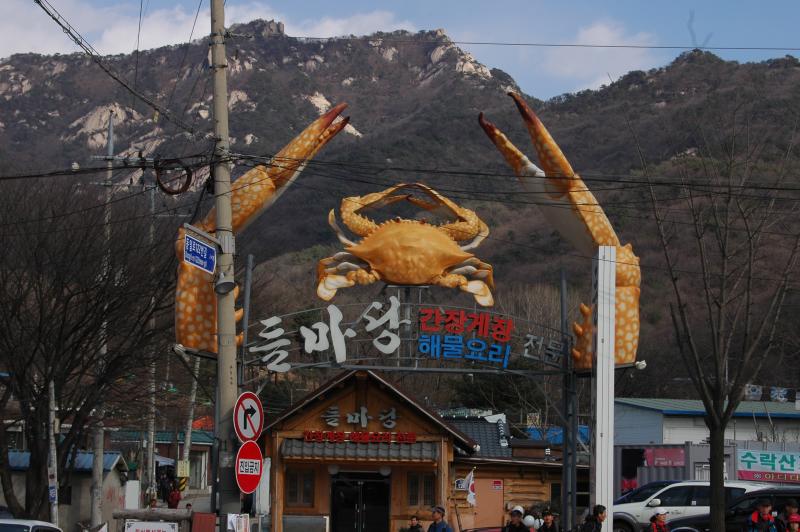
The Lady in Red and I decided to see what there was at the northern end of Seoul's line 7 subway. Although the immediate surroundings were less than impressive, an area across the street held some promise - a crab and a couple brown signs, commonly used for tourist or natural sights.
As it turns out, Jangam station is the perfect place to see Suraksan, or Mt. Surak as a Westerner might call it. Not to be confused with Seoraksan, the National Park in Gangwon-do offering a month's worth of hiking, Suraksan is an easy day trip from anywhere in Seoul.
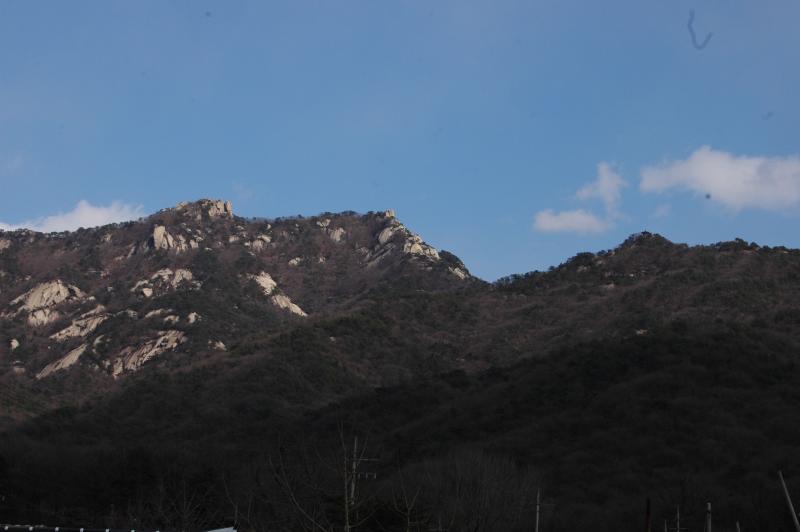
A gorgeous mountain - and we're still across the street from it.
It goes without saying that every mountain has to be climbed. This one was no different, although a paved road did indicate the path for as high up as we climbed.

Like most places in the nation, there are adequate places to buy anything you might need to conquer the mountain. Not pictured to the left is a more-than-adequate supply of walking sticks - one of which the Lady in Red walked away with.

More than a few groups come to Suraksan to hike the mountain - so pick a flyer to join one of them. A bit tacky, but possibly helpful - if you can read Korean or can sign up in Korean.
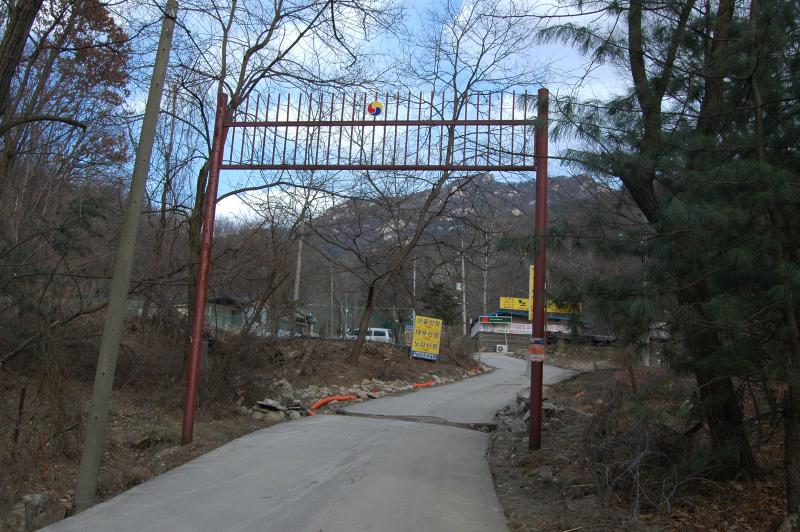
Follow the road uphill to the welcoming gate. While the purist hikers may disapprove of the road, it's admittedly easier to follow - and a lot easier to get a car up. Not pictured are a number of permanent shops and restaurants, some featuring the infamous bosintang (dog meat soup).

While walking up the mountain, we came across 노강서원 - Nogang Seowon, or a Confucian school. Originally built in 1689 in Noryangjin (central Seoul), the school was built in tribute to Bak Taebo, who was exiled for opposing the removal of Queen Inhyeon. Rebuilt on the site of Cheongjeolsa (temple), it was one of 47 seowon to be allowed to operate under the government of Lord Taewon. Not a whole lot worth seeing, but a reminder that generations of Korean children really did have to walk two kilometers uphill to school.
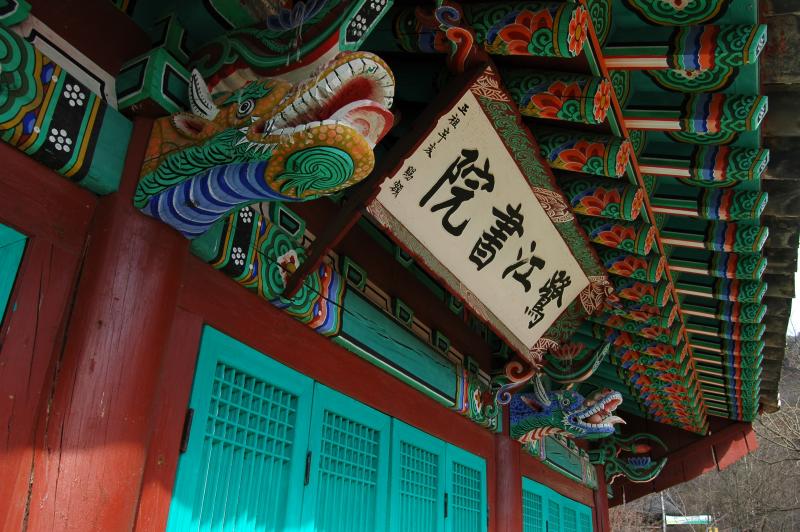
Here there be dragons!
While there are several hiking trails up Suraksan, quite a few will take you past 석림사, or Seoklimsa (temple), also called 'Suklimsa'. While the English version of the engraved sign has a number of typos, the temple was first founded in 1671. The temple was rebuilt several times, but was completely burnt down in 1950 during the Korean war. In 1960, a nun happened to call at the temple and decided to rebuild it. By 1965, 'Sangin nun' had rebuilt the temple with her own hands.
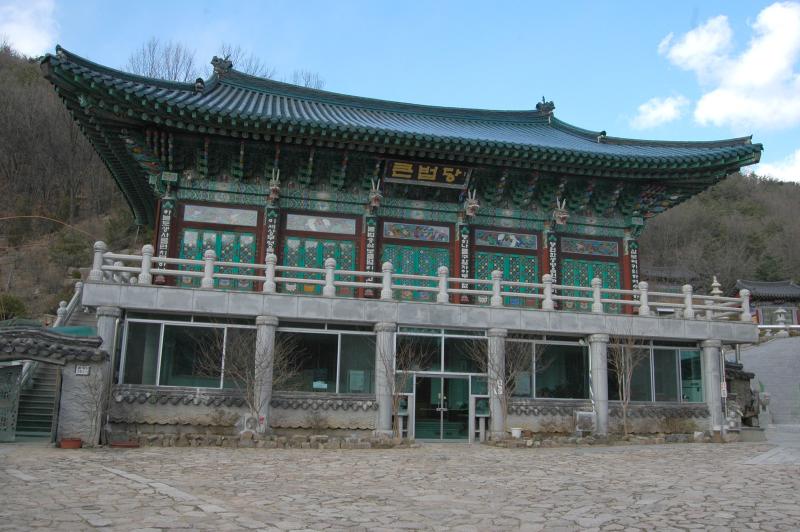
The main building - we didn't try to get in, but it didn't exactly appear open to tourists.
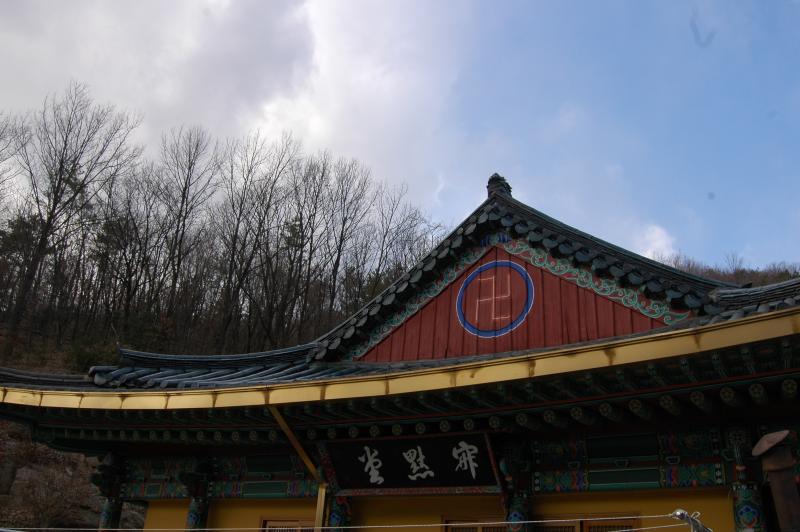
One of the other buildings of the temple.
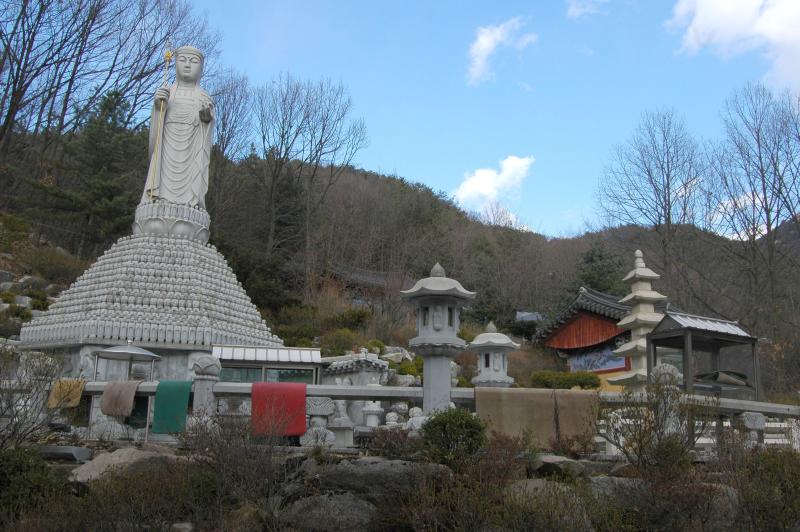
I broke my rule of not photographing Buddhas - but then again, there was no one around to stop us. A wonderful sight - one that needs to be experienced for yourself, if you can make the trip up. Each of the smaller Buddhas is essentially identical - and there are hundreds.
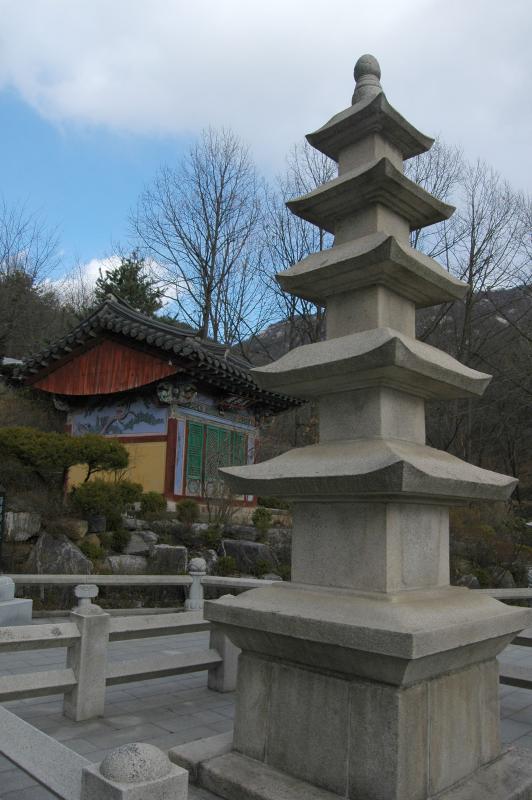
No sign indicates what's inside this pagoda, although it's a beautiful sight no matter.
There's plenty more of the mountain to see, but we didn't intend to hike the entire thing. It's a quick day trip from anywhere on the Seoul subway system, and the small temple is worth the trip by itself. If you're interested in hiking the mountain, there are ample maps available to navigate the several trails around the area.
Ratings (out of 5 taeguks):
Ease to arrive:

Foreigner-friendly:

Convenience facilities:

Worth the visit:

Directions to Suraksan: Take line 7 all the way to the northernmost terminus of Jangam. Only every other train goes all the way north; if the train you get on ends at Dobongsan, get off and wait for the next train to take you to Jangam. Once there, go out the only exit and walk towards the road. Look across the road for the mountain and the crab in the first picture. Walk past a number of restaurants and stores, and you'll eventually see the maps of Suraksan.
 © Chris Backe - 2010
© Chris Backe - 2010This post was originally published on my blog, Chris in South Korea. If you are reading this on another website and there is no linkback or credit given, you are reading an UNAUTHORIZED FEED.



 RSS Feed
RSS Feed
Recent comments